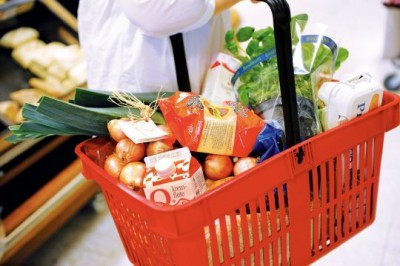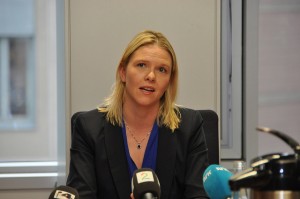Last month’s sharp and surprising jump in food prices, already high in Norway, has upset the government minister in charge of agriculture and food. Sylvi Listhaug, who angered farmers last spring by trying to curb their subsidy demands, wants to know why prices at the grocery stores have increased much more than predicted.

Speaking at a debate on food prices at this week’s major political gathering in Arendal, Listhaug claimed that food prices in Norway have risen too high and too quickly, and much more than the state’s final agreement with the farmers allowed. The sharp rise announced earlier this week was unexpected, boosted Norway’s inflation rate and even spurred a jump in the value of the Norwegian krone.
Listhaug, of the Progress Party, suspects the grocery store chains are gouging Norwegian consumers in their quest for profits. “That because the price rise is 10 times what the agricultural agreement provided for, because food prices internationally have gone down in recent years and because 95 percent of all fruit and vegetables in Norway is imported without tariffs from abroad,” Listhaug said. “I think Norwegian consumers are paying too much for food, and we intend to look into this.”
Her ministry announced that representatives from Norway’s grocery stores chains were thus “invited” to a meeting on Friday afternoon where they would be asked to explain why food prices rose 3.2 percent last month.

Listhaug, who once worked for some grocery store clients when she still worked for the controversial First House communications and PR firm last year, now claims that Norway’s powerful retailers and wholesalers who control the market have raised prices dramatically in recent months. “We all know they’re the wealthiest families in Norway,” she said in Arendal. “I think Norwegian consumers have a right to know why the grocery retailers have raised the price of (imported) fruit and vegetables by 4 or 5 percent in July, when you can barely find that type of Norwegian-grown goods i the market.”
That’s not entirely true. The price of celery, for example, has doubled in recent weeks when Norwegian farmers started delivering their celery for sale. Imported celery that sold for NOK 12-15 per stalk last spring has since disappeared, and the Norwegian celery now costs as much as NOK 27 per stalk. The price of eggs, milk and, not least, cheese has also jumped by around 10 percent since last winter.
Ole Robert Reitan of the REMA chain of grocery stores, one of Listhaug’s former clients, claimed prices at his family’s chain had only risen 1 percent so far this year. He intended to attend Listhaug’s meeting on Friday.
‘Many reasons’ for Norway’s high food prices
Asked why he thinks food prices in Norway are so much higher than in other countries, Reitan said there were “many reasons for it. One is expensive food production because Norway is a difficult land to farm in. That has led to high tariffs to protect Norwegian producers. We run our stores in Norway in the same way as in other countries, including Denmark. Groceries are 30 to 40 percent cheaper there.” Norway’s high labour costs, high real estate prices and leasing rates and high employer taxes are also cited as reasons for high prices at the grocery store.
That still doesn’t explain why the same filet of Frøya-brand salmon costs NOK 58 at a Kiwi grocery store and NOK 79.90 at a Meny grocery store, when both chains are owned by the same dominant retailer and wholesaler in Norway, NorgesGruppen. A dozen Prior eggs at Centra Mat at Høvik outside Oslo costs around NOK 50, while they cost NOK 45.90 at Meny and NOK 39.90 at Kiwi. Kiwi, however, lacks Centra’s better selection of higher quality fish and meat, meaning that Centra’s owners may simply try to get consumers to pay more for basic items like eggs and milk while they’re in the store.
Smart consumers with enough time on their hands shop at a variety of stores, to take advantage of price variations. Or they drive over the border to Sweden, where most items are much cheaper than in Norway. Listhaug isn’t the first government minister to get upset and call for investigations into food prices in Norway.
“We know that many of these merchants are making themselves rich on us consumers,” she said. “There’s reason to raise questions about whether consumers are paying too much.”
newsinenglish.no/Nina Berglund

